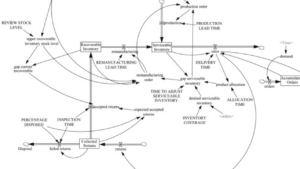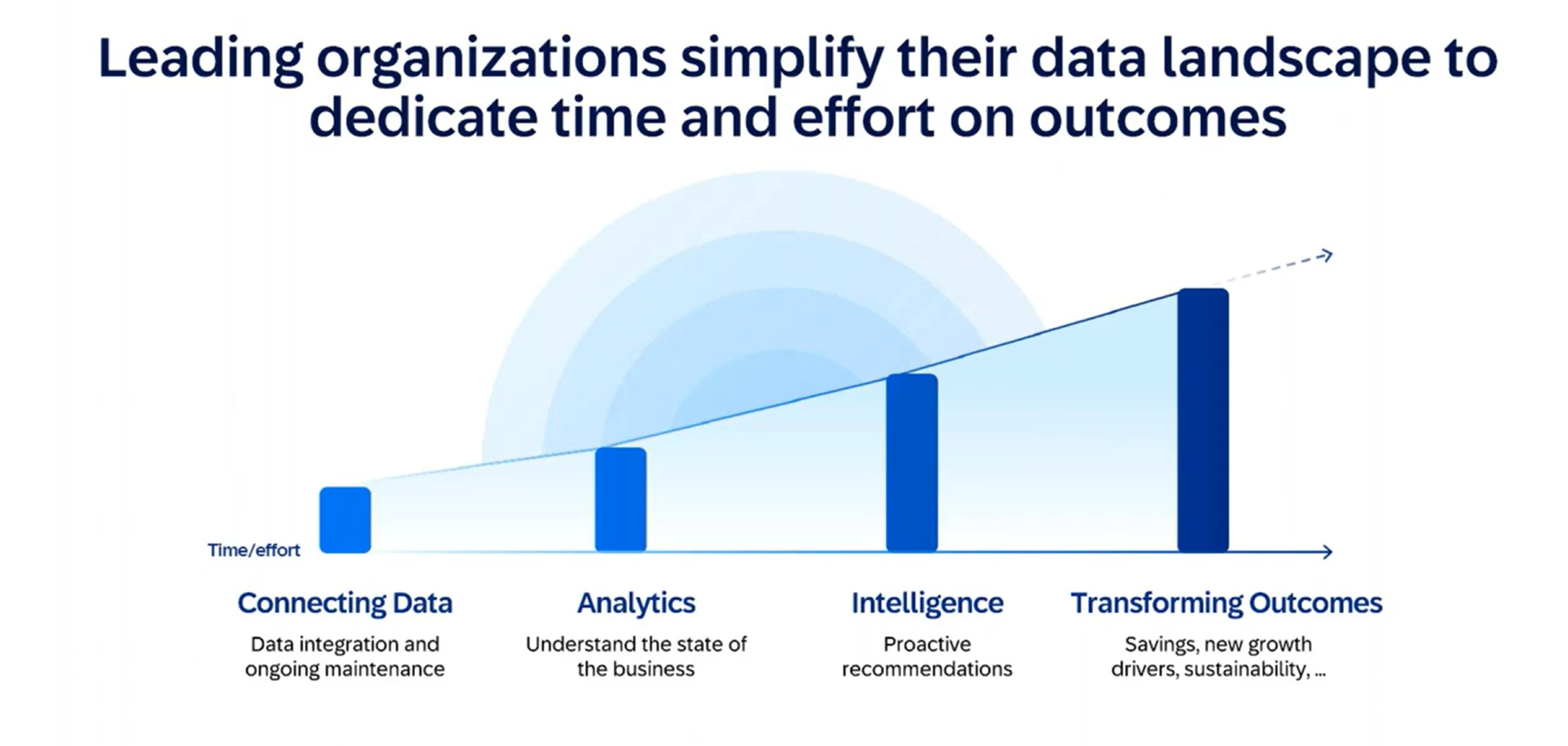Any analytics technique or any analytics jargon, whether it's data science or advanced analytics, is eventually all about leveraging data or information to extract insights and knowledge based on specific techniques. However, using defined techniques sometimes leads to challenges or failures when companies try to leverage these algorithms in the real world. The reason we cannot translate a significant amount of academic work into the world of business can be attributed to two high-level reasons. First, many of these technologies and innovative research do not have any immediate application in the industry at scale. The second category of the reason is that in academic environments, those who experiment with these algorithms typically experiment with problems that are an excellent fit for the specific algorithm being leveraged by them. and so is the data available to them. However, some methodologies, like system dynamics simulation modeling, can be leveraged for problems that do not fall within the rigid bounds of a specific approach. The system dynamics approach can be useful in modeling unique and customized inventory management systems.
Any supply chain professional can vouch that supply chains are messy. The challenges we encounter in supply chains can rarely be solved using a predefined algorithm like a clustering algorithm, regression algorithm, or classification. Supply chain problems need to be thought of in a much different way. While eventually, you want to translate those problems into the world of algorithms, though creatively, the initial step is to think about these as business problems and then work your way from there. Just as those working with data engineering and data mining need to have a good understanding of the business context of the data as well those working very close to the business problems need to have some realization of how those business problems can be broken down into various some problems that need to be solved leveraging a combination of people processes and technology. And note that analytics plays a part in all three components of people processes and technology. And this is where system dynamics can play a really powerful role in helping define the problems and the challenges.
System dynamics plays a much more significant role in the supply chain world, where things are not black or white, as explained earlier. And no one knows it better than supply chain managers who manage these problems on a daily basis. Chances are high that through their experience and through their decades of firefighting experience, they have accumulated a very good understanding of most of the methodology that system dynamics entails. The need may be to help them understand how to structure it so that then they can use that structure to decompose the problem into many subproblems eventually. Eventually, the problems transition from business problems into mathematical problems. And an excellent way to think about it, in the simplest of forms, is inventory management and planning. Start leveraging the system dynamics approach on inventory management challenges in your organization or within your supply chain or a specific warehouse. In your system dynamics diagramming process, you will eventually get to a point where the calculation of safety stop or the minimum amount of inventory you need to hold for sure or to meet certain conditions comes into play. And then, it becomes a problem that can be solved by an algorithm.
What is System Dynamics?
So what exactly is system dynamics approach? As per system dynamics society, it is a method of studying dynamics or interactions within a system. Consider a simple example before we get into an actual (but still simple) example. If you have been in the fishkeeping hobby, you know that the environment in an aquarium needs to be balanced. The nitrogen level in water is a key indicator of water quality and you want to keep the levels sane. If you have too many fish, the nitrogen level rises if you feed them regularly. So if you decide to overstock your aquarium, you need to reduce the number of feeds. You need to increase your water changes if you still have high nitrogen levels. This ecosystem or system (known as the Nitrogen cycle) can be represented in the form of the various elements interacting with each other. An increase in one either increases or decreases another element of the system. For example, an increase in number of fishes will increase the nitrogen, provided other elements remain the same.
Now let us use an example of production and inventory management system dynamics shown below. As you can see in the diagram, it captures some relationships that you may already be aware of as a supply chain professional. Note that this is a highly simplified view, but still presents the idea of how dynamics of an inventory system interact.

The positive sign shows near the arrowheads in the above diagram indicates a positive relationship, essentially meaning, in the context of this example, that an increase in inventory will increase fulfillment percentage. Similarly, an increase in unfulfilled orders will lead to an increase in inventory build-up. This example above was simplified, but as seen in the illustration below, you can also capture interactions or dynamics in complex systems.
 Source: Research Paper: System Dynamics modeling of a production and inventory system for remanufacturing to evaluate system improvement strategies. ScienceDirect.com
Source: Research Paper: System Dynamics modeling of a production and inventory system for remanufacturing to evaluate system improvement strategies. ScienceDirect.com
So to summarize, System dynamics models help model systems as casually closed systems that in themselves, define its behavior. Each system has a feedback loop (circular causality) and leverages the concept of stocks and flows. Stocks are essentially the system's memory, and flows affect these stocks, as illustrated in the examples above. As you can see from the example diagram above, you do not need to be a mathematical genius or have a deep understanding of technology to draw a system dynamics diagram, even when the system is complex. The fact or the reality is that those working within the processes, which will be the supply chain managers, are the best suited to draw this initial system dynamics chart. This chart can be used by analytics translators leveraging it to translate those complex relationships into an analytics problem. From a supply chain planning perspective, such a chart is extremely useful for supply chain managers. They can use a chart like this to identify which parameters are causing the planning bottlenecks eventually, and hence strategize associated strategy.
 The positive sign shows near the arrowheads in the above diagram indicates a positive relationship, essentially meaning, in the context of this example, that an increase in inventory will increase fulfillment percentage. Similarly, an increase in unfulfilled orders will lead to an increase in inventory build-up. This example above was simplified, but as seen in the illustration below, you can also capture interactions or dynamics in complex systems.
The positive sign shows near the arrowheads in the above diagram indicates a positive relationship, essentially meaning, in the context of this example, that an increase in inventory will increase fulfillment percentage. Similarly, an increase in unfulfilled orders will lead to an increase in inventory build-up. This example above was simplified, but as seen in the illustration below, you can also capture interactions or dynamics in complex systems.
 Source: Research Paper: System Dynamics modeling of a production and inventory system for remanufacturing to evaluate system improvement strategies. ScienceDirect.com
So to summarize, System dynamics models help model systems as casually closed systems that in themselves, define its behavior. Each system has a feedback loop (circular causality) and leverages the concept of stocks and flows. Stocks are essentially the system's memory, and flows affect these stocks, as illustrated in the examples above. As you can see from the example diagram above, you do not need to be a mathematical genius or have a deep understanding of technology to draw a system dynamics diagram, even when the system is complex. The fact or the reality is that those working within the processes, which will be the supply chain managers, are the best suited to draw this initial system dynamics chart. This chart can be used by analytics translators leveraging it to translate those complex relationships into an analytics problem. From a supply chain planning perspective, such a chart is extremely useful for supply chain managers. They can use a chart like this to identify which parameters are causing the planning bottlenecks eventually, and hence strategize associated strategy.
Source: Research Paper: System Dynamics modeling of a production and inventory system for remanufacturing to evaluate system improvement strategies. ScienceDirect.com
So to summarize, System dynamics models help model systems as casually closed systems that in themselves, define its behavior. Each system has a feedback loop (circular causality) and leverages the concept of stocks and flows. Stocks are essentially the system's memory, and flows affect these stocks, as illustrated in the examples above. As you can see from the example diagram above, you do not need to be a mathematical genius or have a deep understanding of technology to draw a system dynamics diagram, even when the system is complex. The fact or the reality is that those working within the processes, which will be the supply chain managers, are the best suited to draw this initial system dynamics chart. This chart can be used by analytics translators leveraging it to translate those complex relationships into an analytics problem. From a supply chain planning perspective, such a chart is extremely useful for supply chain managers. They can use a chart like this to identify which parameters are causing the planning bottlenecks eventually, and hence strategize associated strategy.








